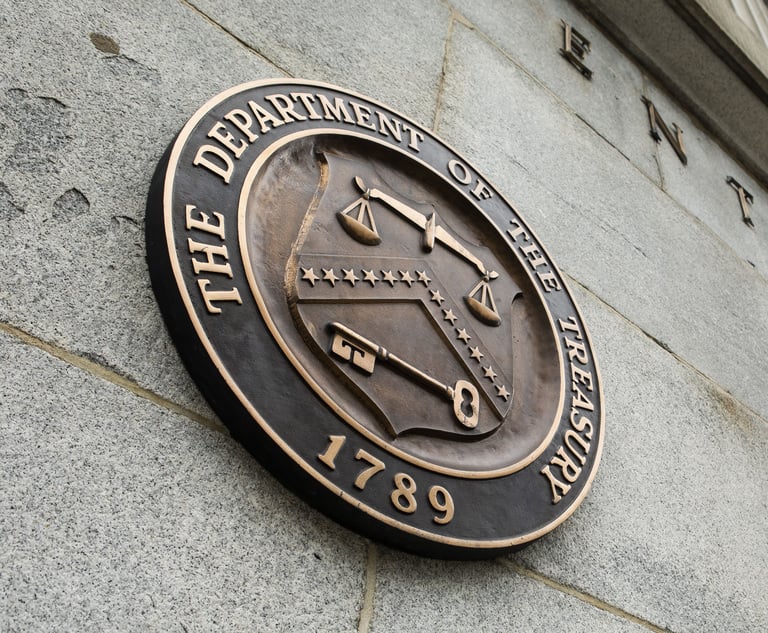USMCA and the Future of Investor Arbitration
Even as international commercial arbitration has achieved broad acceptance, investor-state dispute settlement—ISDS—remains the subject of considerable controversy.
March 26, 2019 at 09:36 AM
5 minute read
 Harout Jack Samra, DLA Piper
Harout Jack Samra, DLA Piper
Even as international commercial arbitration has achieved broad acceptance, investor-state dispute settlement—ISDS—remains the subject of considerable controversy. ISDS was at the forefront of the recent negotiations concerning the Transatlantic Trade and Investment Partnership and Trans-Pacific Partnership Agreement, now called the Comprehensive and Progressive Agreement for Trans-Pacific Partnership. It has re-emerged as one of the principal proposed changes in the recently unveiled U.S.-Mexico-Canada Agreement (USMCA).
The Debate and Its Historical Context
The present debate and USMCA's role in it must be placed in historical context. While international commercial arbitration has become increasingly prevalent over the last century, ISDS is a relative newcomer. Though bilateral investment treaties began incorporating ISDS provisions and ICSID was founded half a century ago, actual investor-state cases did not emerge for decades. Even then, it was not until the early-2000s that ISDS rose to prominence. It follows that the large part of ISDS experience and cases dates from the last two decades.
Critics of the current system point to its flaws, including the cost and length of proceedings, the perceived insularity of the field's practitioners, the development of a quasi-common law that some argue favors investors, and challenges with enforcement of awards. In the face of this criticism, ISDS supporters argue that the present system—anchored chiefly by ICSID—offers significant benefits, including more readily enforceable awards, the de-nationalization of disputes, and the removal of state interests as an obstacle to an investor's ability to seek effective relief. To paraphrase Churchill, the current ISDS regime may well be the best bad system available. Of democracy, Churchill famously said, “No one pretends that democracy is perfect or all-wise. Indeed it has been said that democracy is the worst form of Government except for all those other forms that have been tried from time to time.”
USMCA: A 'Sea Change' in ISDS?
Even before the 2016 victory of President Donald J. Trump, ISDS had become the subject of the international negotiations related to the TTP and TPP treaties. However, Trump's particular interest and policy goals concerning trade have brought greater urgency. Not surprisingly, the Administration has treated the re-nogiation of existing trade agreements, particularly NAFTA, as high priorities, and pointed to the results of those negotiations—including USMCA—as significant accomplishments.
The proposed text of USMCA was unveiled in the Fall of 2018, and was immediately the subject of debate. It has since been signed by the President, but remains subject to Congressional approval. Not surprisingly, ISDS was among the most significant departures from NAFTA, with some commentators calling it a “sea change,” see Robert Landicho and Andrea Cohen, “What's in a Name Change? For Investment Claims Under the New USMCA Instead of NAFTA, (Nearly) Everything,” Kluwer Arbitration Blog (Oct. 5, 2018), and an effort to “curb ISDS,” Teddy Baldwin, Christina Doria, and Francisco Franco, “The New NAFTA – the United States-Mexico-Canada Agreement (USMCA) Brings Future Changes to ISDS,” Global Arbitration News, Oct. 4, 2018. Indeed, the proposed agreement eliminates ISDS between the United States and Canada after a three year phase out period, following which investors will be required to seek recourse before the national courts of either country.
By comparison, USMCA retains ISDS as between Mexico and the United States, but with limits which appear largely to respond to many of the criticisms described above. These include a new 18-month local litigation requirement coupled with a concurrent four year limitations period for treaty claims; a fork-in-the-road provision, which may preclude parties from bringing the same claims in both national courts and arbitration; a limited most-favored nation clause apparently intended to circumvent the line of cases which permitted such clauses to be extended to the substantive protections afforded in other treaties; See, e.g., Maffezini v. Kingdom of Spain, ICSID Case No. ARB/97/7, Decision on Jurisdiction, 16 ICSID REV. FILJ 212 (2001), and the adoption of the IBA Guidelines on Conflicts of Interest and related limitations on perceived conflicts arising from the practice of “double-hatting” (i.e., when individuals appear as counsel, arbitrators, or expects in different proceedings).
USMCA as ISDS 3.0
Change has been the constant in this evolving area of international law. The earliest generation of bilateral investment treaties, often no more than a few pages in length, bear virtually no resemblance to the treaties which proliferated throughout the 1990s, which themselves were rather sparse. Indeed, NAFTA may have been among the first of the second generation of more rubust free trade agreements, which included detailed investment protection chapters.
Whether USMCA will bring about a sea change in ISDS—that is, whether it will emerge as ISDS 3.0—is yet to be determined. However, a realignment in favor of the state in international investment protection appears to be underway.
Harout J. Samra, an associate with DLA Piper, focuses his practice on international dispute resolution and arbitration matters, including international civil litigation in U.S. courts.
This content has been archived. It is available through our partners, LexisNexis® and Bloomberg Law.
To view this content, please continue to their sites.
Not a Lexis Subscriber?
Subscribe Now
Not a Bloomberg Law Subscriber?
Subscribe Now
NOT FOR REPRINT
© 2025 ALM Global, LLC, All Rights Reserved. Request academic re-use from www.copyright.com. All other uses, submit a request to [email protected]. For more information visit Asset & Logo Licensing.
You Might Like
View All

Don’t Forget the Owner’s Manual: A Guide to Proving Liability Through Manufacturers’ Warnings and Instructions
5 minute read

Trending Stories
Who Got The Work
J. Brugh Lower of Gibbons has entered an appearance for industrial equipment supplier Devco Corporation in a pending trademark infringement lawsuit. The suit, accusing the defendant of selling knock-off Graco products, was filed Dec. 18 in New Jersey District Court by Rivkin Radler on behalf of Graco Inc. and Graco Minnesota. The case, assigned to U.S. District Judge Zahid N. Quraishi, is 3:24-cv-11294, Graco Inc. et al v. Devco Corporation.
Who Got The Work
Rebecca Maller-Stein and Kent A. Yalowitz of Arnold & Porter Kaye Scholer have entered their appearances for Hanaco Venture Capital and its executives, Lior Prosor and David Frankel, in a pending securities lawsuit. The action, filed on Dec. 24 in New York Southern District Court by Zell, Aron & Co. on behalf of Goldeneye Advisors, accuses the defendants of negligently and fraudulently managing the plaintiff's $1 million investment. The case, assigned to U.S. District Judge Vernon S. Broderick, is 1:24-cv-09918, Goldeneye Advisors, LLC v. Hanaco Venture Capital, Ltd. et al.
Who Got The Work
Attorneys from A&O Shearman has stepped in as defense counsel for Toronto-Dominion Bank and other defendants in a pending securities class action. The suit, filed Dec. 11 in New York Southern District Court by Bleichmar Fonti & Auld, accuses the defendants of concealing the bank's 'pervasive' deficiencies in regards to its compliance with the Bank Secrecy Act and the quality of its anti-money laundering controls. The case, assigned to U.S. District Judge Arun Subramanian, is 1:24-cv-09445, Gonzalez v. The Toronto-Dominion Bank et al.
Who Got The Work
Crown Castle International, a Pennsylvania company providing shared communications infrastructure, has turned to Luke D. Wolf of Gordon Rees Scully Mansukhani to fend off a pending breach-of-contract lawsuit. The court action, filed Nov. 25 in Michigan Eastern District Court by Hooper Hathaway PC on behalf of The Town Residences LLC, accuses Crown Castle of failing to transfer approximately $30,000 in utility payments from T-Mobile in breach of a roof-top lease and assignment agreement. The case, assigned to U.S. District Judge Susan K. Declercq, is 2:24-cv-13131, The Town Residences LLC v. T-Mobile US, Inc. et al.
Who Got The Work
Wilfred P. Coronato and Daniel M. Schwartz of McCarter & English have stepped in as defense counsel to Electrolux Home Products Inc. in a pending product liability lawsuit. The court action, filed Nov. 26 in New York Eastern District Court by Poulos Lopiccolo PC and Nagel Rice LLP on behalf of David Stern, alleges that the defendant's refrigerators’ drawers and shelving repeatedly break and fall apart within months after purchase. The case, assigned to U.S. District Judge Joan M. Azrack, is 2:24-cv-08204, Stern v. Electrolux Home Products, Inc.
Featured Firms
Law Offices of Gary Martin Hays & Associates, P.C.
(470) 294-1674
Law Offices of Mark E. Salomone
(857) 444-6468
Smith & Hassler
(713) 739-1250






